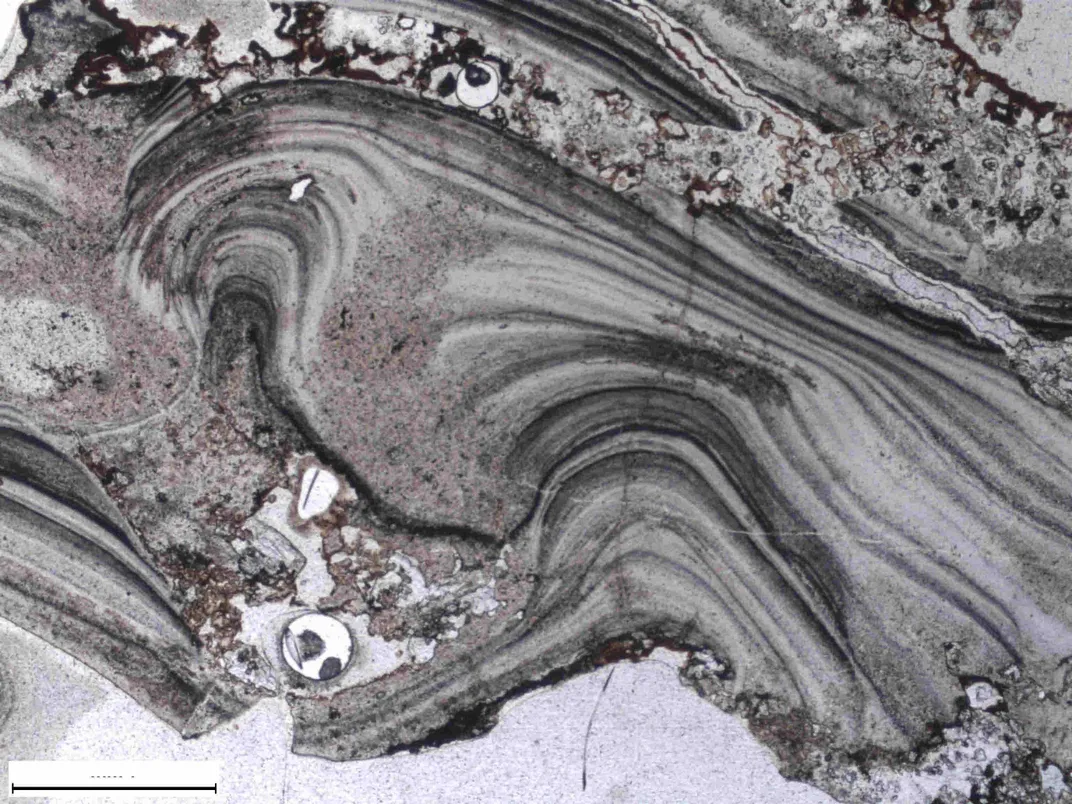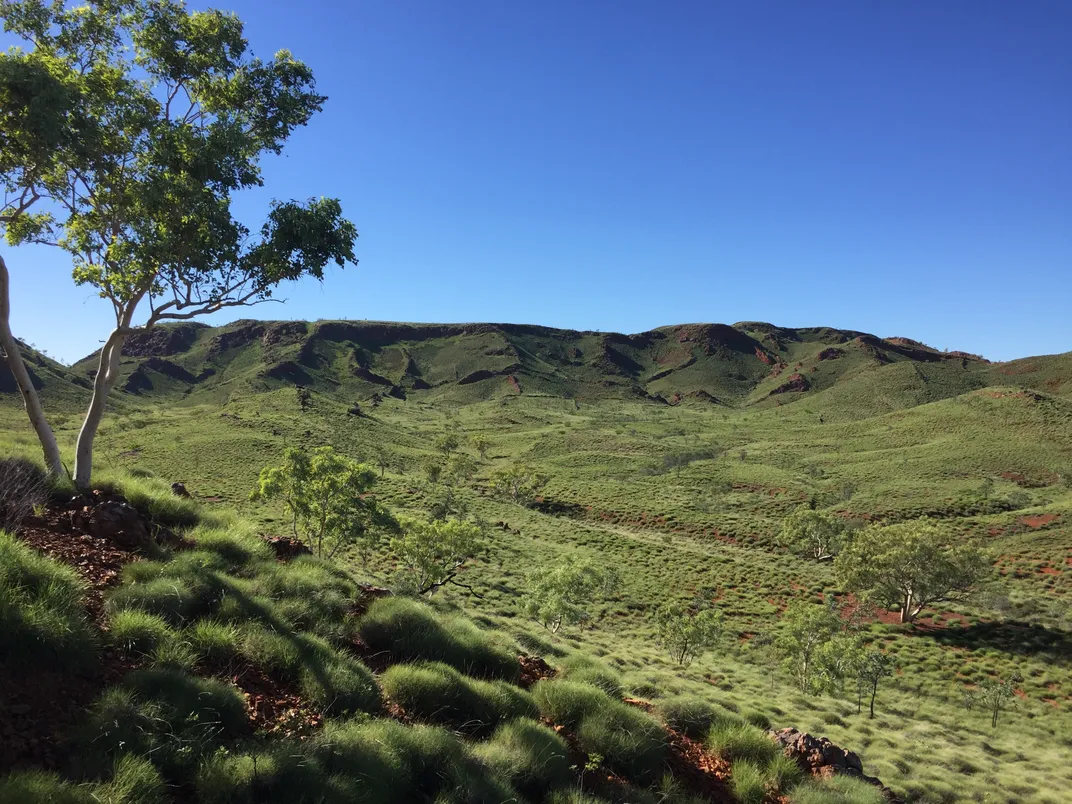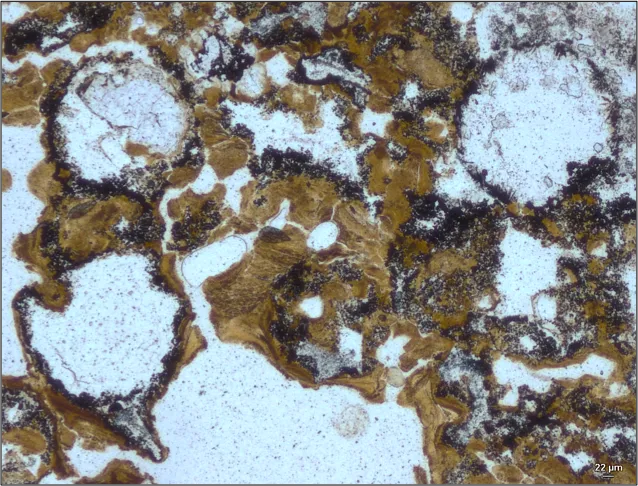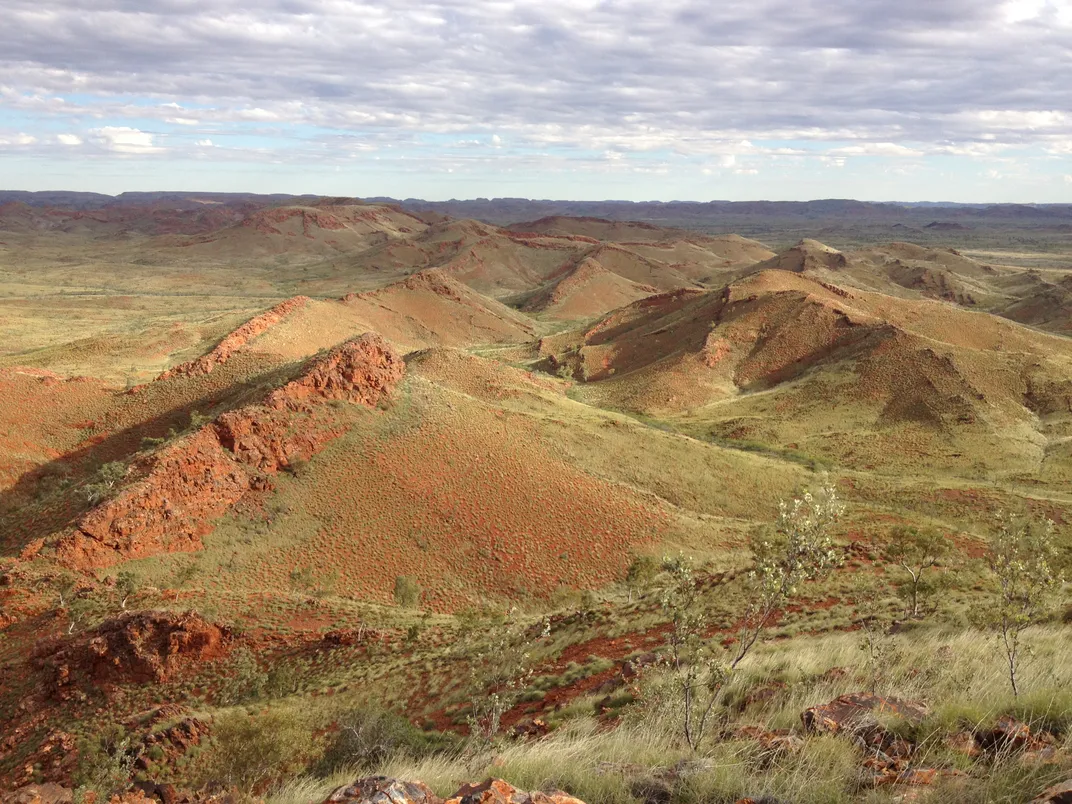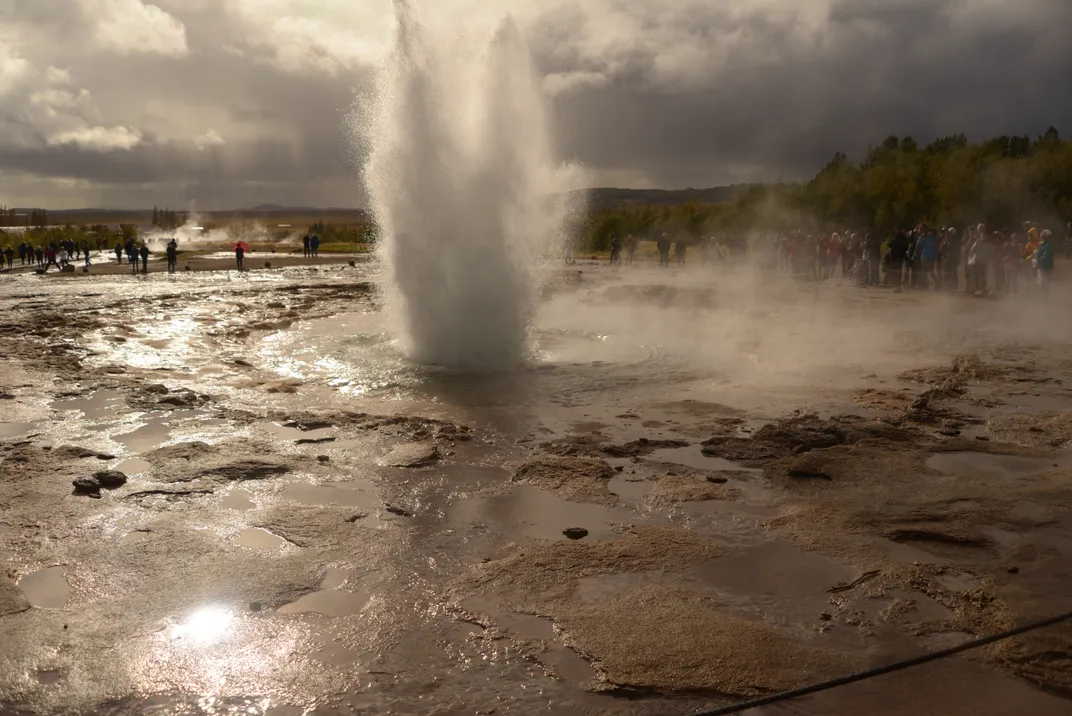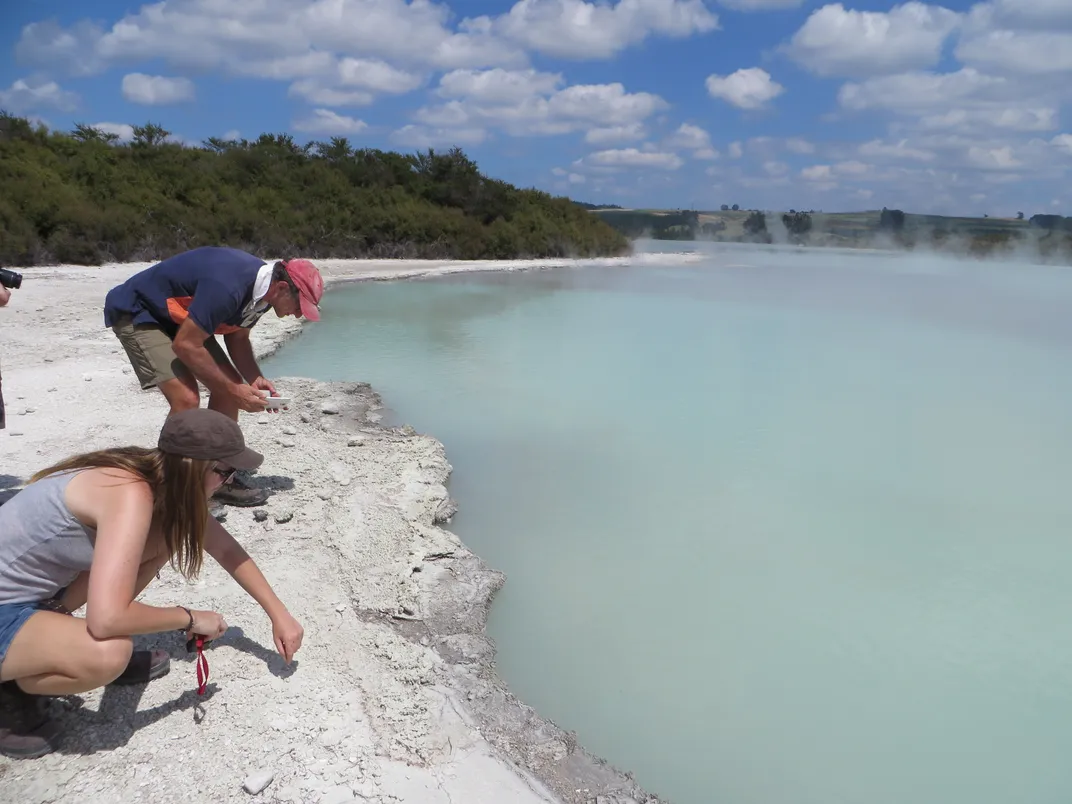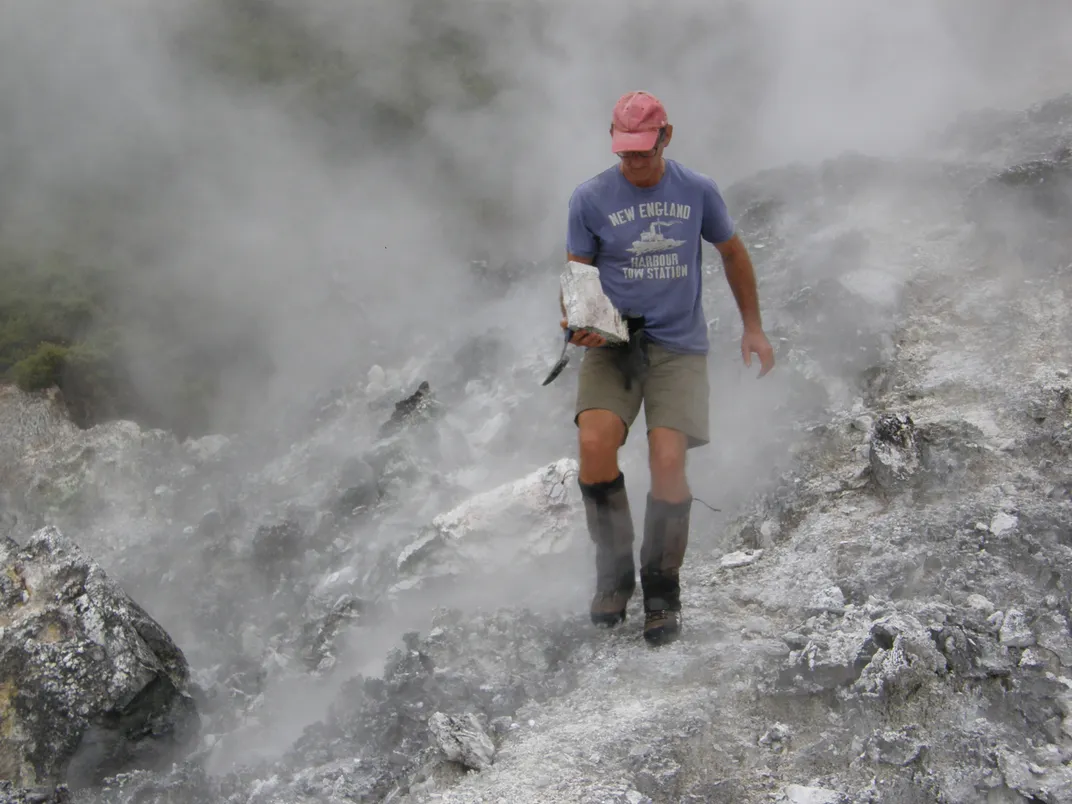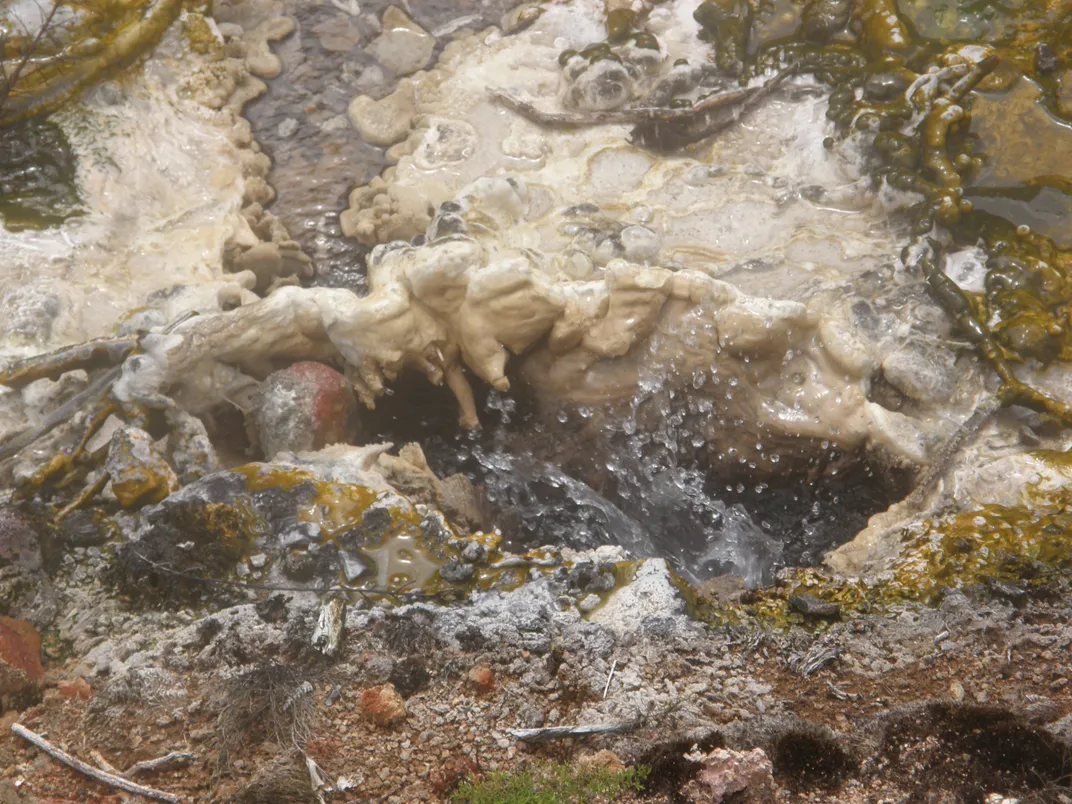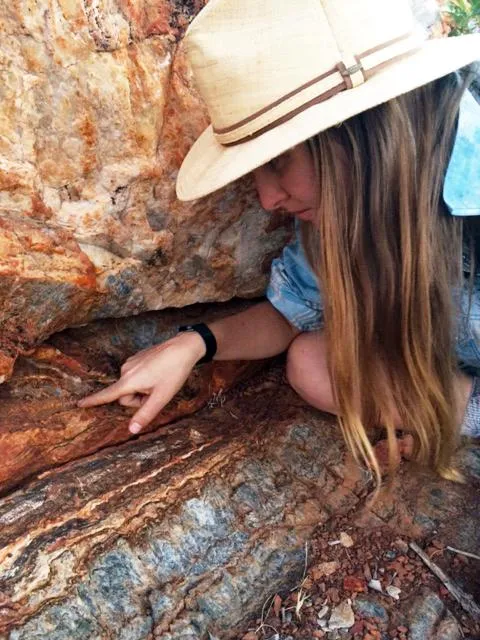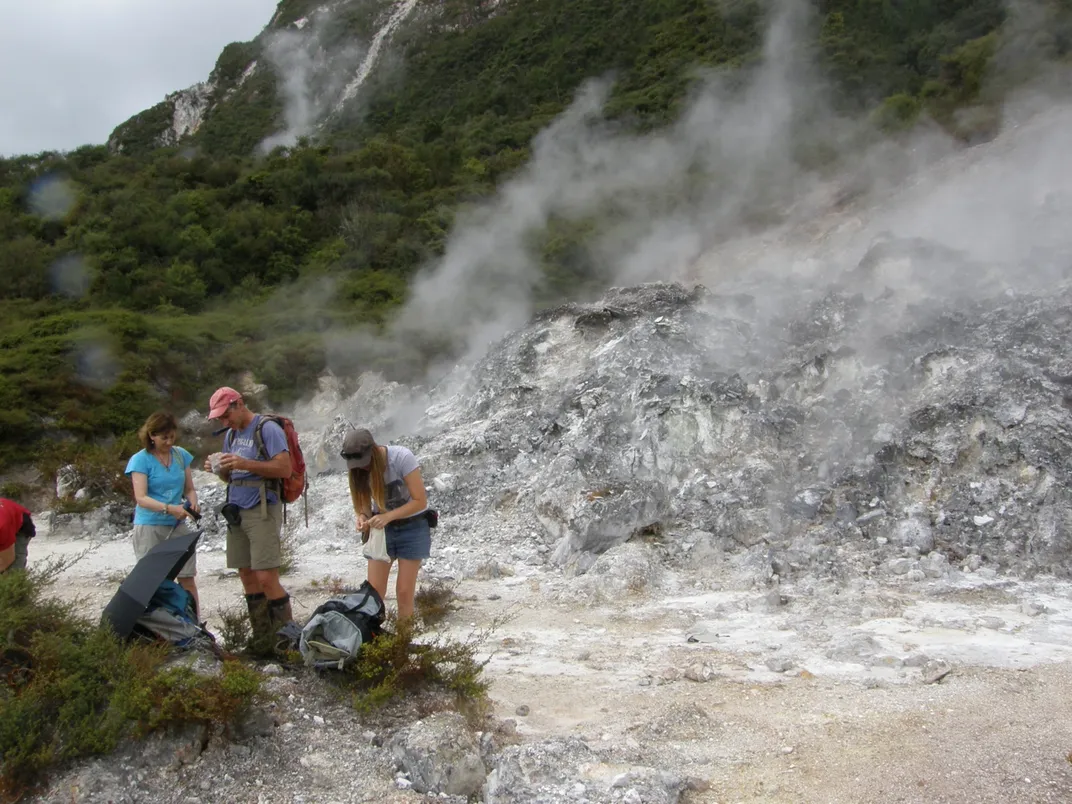Fossils From Ancient Hot Springs Suggest Life May Have Evolved on Land
These 3.5-billion-year-old rocks could vindicate Darwin’s claim that life evolved in “some warm little pond,” and not in the ocean
/https://tf-cmsv2-smithsonianmag-media.s3.amazonaws.com/filer/81/64/81644563-ffc5-4772-87ff-fa75c8c678ee/outcrop_of_rocks_in_the_dresser_formation_containing_biosignatures_and_hot_spring_deposits.jpg)
Some of the earliest life on Earth may have dwelled in 3.5 billion-year-old Australian hot springs, a new study finds. If that’s true, it could mean that life on land dates back 580 million years earlier than we thought—and might offer valuable clues to those who seek evidence of life on Mars and other planets.
"It aids in terms of these bigger picture questions," says lead author Tara Djokic, a graduate student in astrobiology at the University of New South Wales, of her team's analysis of a region known as the Dresser Formation. This find is exciting for two reasons: First, it could mean that life first evolved on land, and not in the ocean, as researchers previously believed. Moreover, according to Djokic, this is the oldest evidence of life found around terrestrial hot springs by about 3 billion years.
The Dresser Formation is a region of dry, ancient volcanic rocks in Western Australia that has long drawn the attention of scientists interested in the origins of Earthly life. The region is full of stromatolites, layers of rock that were produced by ancient photosynthesizing bacteria that grew in moist mats and trapped layers of sediments over time. These fossils, researchers believe, represent some of Earth's earliest life.
Stromatolites today are often found in saltwater environments, which is why scientists have for decades assumed that the Dresser Formation was once an ocean shoreline. However, in recent years, scientists have realized that in fact the Dresser Formation was a caldera, a crater-like depression left behind by a collapsed volcano. This raised the possibility that it may have hosted hot springs that nurtured early life, Djokic says.
In a breakthrough, Djokic and her team found evidence of a rock called geyserite at the Dresser Formation, according to their study published this week in the journal Nature Communications. As it name suggests, geyserite is a rock found exclusively around geysers, hot springs and other geothermal formations. It's produced by the superheated groundwater melting silica from the volcanic rocks, creating molten fluids that over time cool into rock.
"These hot spring fluids are known to host life," Djokic says. "In modern settings ... we find all these little microbes around geyserite." Bolstering their claim, the team also found distinctive "terrace" formations left behind by the cooling molten fluids.
"We're finding converging lines of evidence that all point to the same environment," Djokic says.
The researchers also found "palisade fabrics," which are mineral formations that develop around elongated bacteria, as well preserved bubbles that could have been produced by oxygen from the photosynthesizing bacteria bubbling to the surface. They cite these as further evidence that life may have once thrived around these hot springs.
"The fact that we found geyserite and then we found these biosignatures ... suggests that life was living around these hot springs," Djokic says.
Beyond Earthly life, the new find may help astrobiologists in their hunt for remnants of life on Mars. One of the three possible landing sites for NASA's Mars 2020 rover mission is Columbia Hills, an area of low hills inside a crater where NASA's Spirit rover found evidence of ancient hot springs in 2007. These hot spring remains date to about the same time period as those at the Dresser Formation, Djokic says, meaning the Australian springs make a nice model to study how to find evidence of life on Mars.
"If life ever evolved on Mars, the chances are quite high that it would also be preserved on ancient hot springs," Djokic says.
The discovery could also vindicate a famous biologist: Charles Darwin. Nearly 150 years ago, Darwin argued that life likely evolved in "some warm little pond"—as opposed to the oceans, as many modern scientists and institutions have theorized. Next, Djokic plans to scour the same area for more possible biosignatures and evidence about what kind of life could have lived there.
"This is a good and thorough paper," says Frances Westall, an exobiologist at France's National Center for Scientific Research who was not involved in the study. Westall, who is closely involved in the European Space Agency's forthcoming mission to look for possible life-related gases in the Martian atmosphere, says she this study could provide context clues for what to look for regarding evidence of ancient life on Mars.
More accurately determining whether certain rock features were produced by life will be hard with the instruments NASA is sending to Mars, Westall cautions, but "certainly such samples should be returned to Earth for detailed analysis."
"In my opinion, the novel claims require more evidence," says MIT geobiologist Tanja Bosak, who was also not involved in the study. Bosak, who has extensive research on stromatolites and how evidence of early life can get preserved, says the researchers need to do a better job proving that these features could not have formed geologically, without life.
"This study describes features that don’t obviously have to be stabilized and colonized by microbes to become fossilized," Bosak says. Prior research, including her own, has shown that similar-looking bubbles can be produced and preserved by non-living processes, she says. The palisade fabric is similarly unconvincing, Bosak says, because such rock crystal formations could form from non-biological causes, such as after an asteroid impact.
Bosak also questions how useful this evidence could be for life-hunting Mars, since it's not yet clear whether hot springs ever existed there. The knobby features captured in pictures from the Columbia Hills site, she points out, appear to some geologists to be more the result of basalt rock getting worn away by acid than the remains of hot springs.
"I don’t expect that we’ll be sending a rover to bathe in the hot springs of Mars any time soon," Bosak says.
